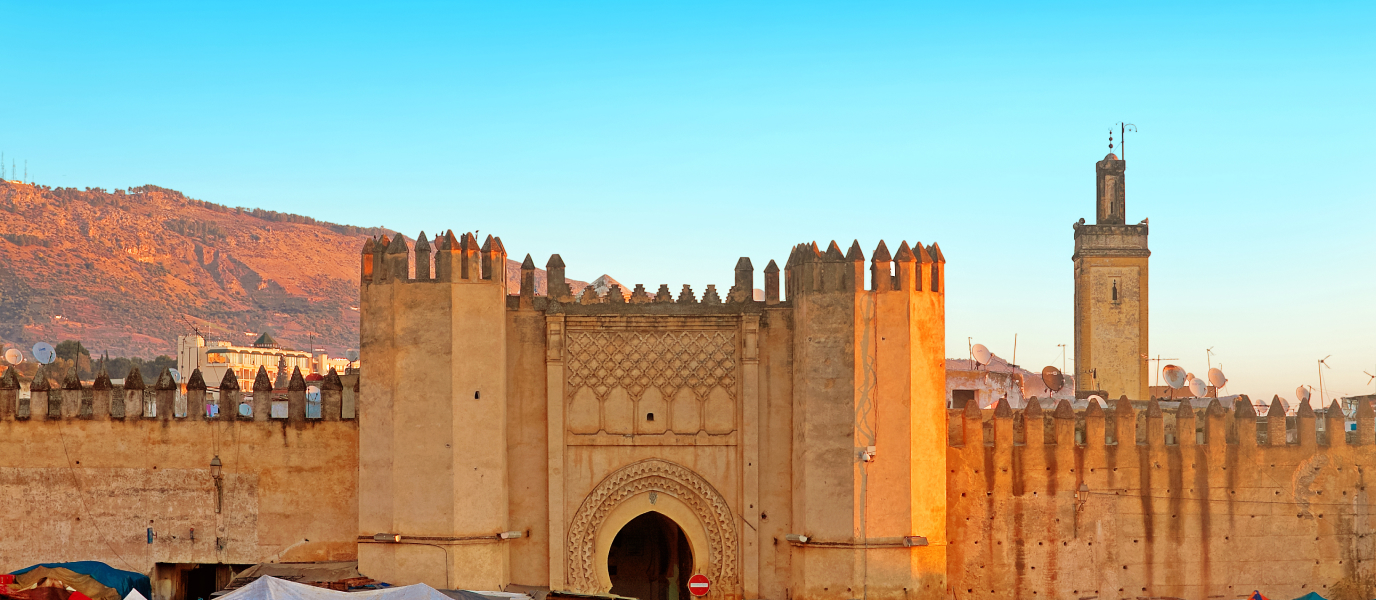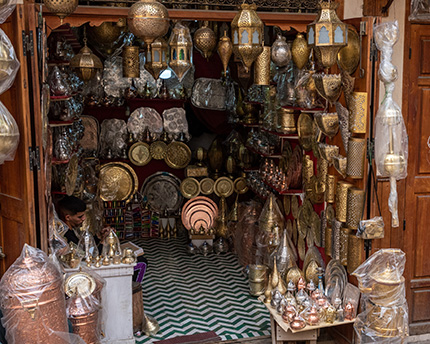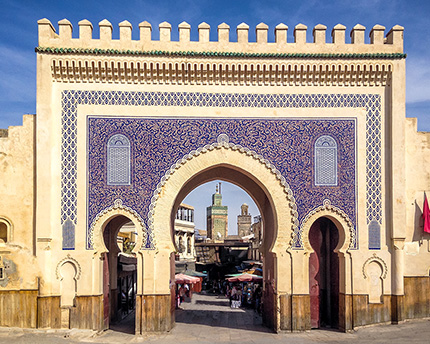The historic centres of ancient Arab cities have always been a draw for travellers of all kinds. Its labyrinthine streets, the countless stalls in its souks, invariably filled with the most unusual merchandise, solemn mosques and madrasas, hidden corners that offer unique images worthy of a postcard: a fountain, a latticework, an intricate mosaic. It’s a fascinating journey to enter these small and colourful universes that make up the old medinas, from Baghdad and Damascus to the Maghreb.
And right in the heart of Morocco, in one of its four imperial cities, the historic city of Fez, lies one of the most impressive medinas in North Africa, the oldest in the country and the largest in the world. Declared a World Heritage Site by UNESCO, it’s a place that preserves the most authentic essence of this unique destination.
The largest medina in the world
Founded in the 8th century, the city of Fez has witnessed the history of the Maghreb from the time of its founders, the early Idrisids, the Almoravids, the Almohads, the Marinids, to the current rulers, the Alaouite dynasty. Thirteen centuries of history have made it the spiritual and cultural capital of Morocco that it is today.
In this regard, the heart of Fez is divided into two areas of different sizes, the area known as Fès el-Bali, literally “Old Fez”, the largest and oldest part of the city, and Fès el-Jedid, the “new” centre founded by the Marinids in the 13th century. All of this is surrounded by ramparts, of which a good part of their sturdy walls still remain. A large open-air museum that is essentially what is known today as the Medina of Fez.
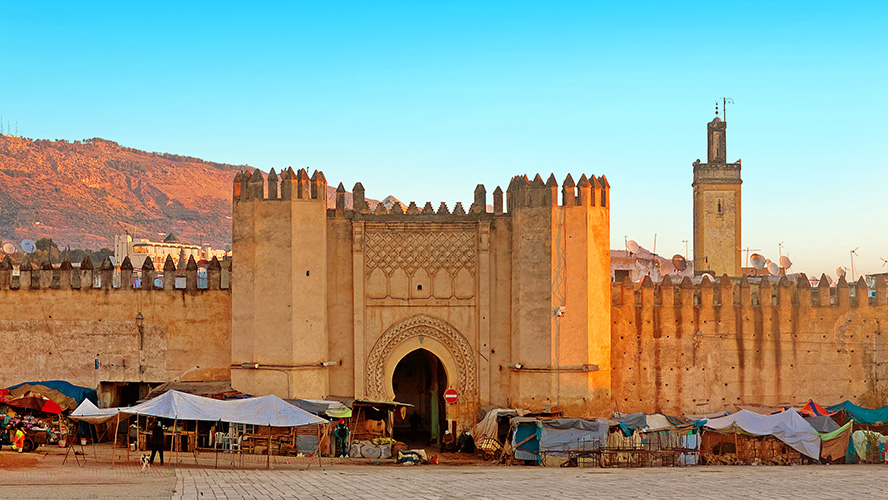
The sprawling urban fabric of the medina and its major monuments, madrasas, funduqs, palaces, residences, mosques, and fountains, are part of a priceless heritage, and together they form what is considered to be the largest pedestrian area in the world. It is said that there are over 10,000 alleyways. An impressive microcosm ranging from architectural gems from different periods to stalls and workshops featuring all kinds of craftsmen; from imposing mosques to small squares where time seems to pass in a different way. The heart of the former imperial capital, one of the best-preserved historic centres in the Islamic world, has a rhythm all of its own.
What to see in the Medina of Fez: a journey through time
As if travelling back in time, to enter the Medina of Fez is to discover a significant number of monuments, as well as a kaleidoscopic urban landscape that grew out of the needs and desires of a rich and complex multicultural society in what was for centuries one of the largest Islamic metropolises.
The list of masterpieces within the Medina of Fez is a long one, but there are certain unmissable sights:
The Blue Gate
Known by this nickname, the Bab Bou Jeloud gate is symbolic of Fez and an outstanding work of traditional Moroccan architecture, although it was built in 1913 on the instructions of the French colonial administration. Its large façade of zelliges and arabesques (blue on the outside and green on the inside) and its triple-arched gate give it a unique appearance. It’s also the main entry point to the medina, giving access to the streets of Tala’a Kebira and Tala’a Sghira, the main avenues of Fez el-Bali.
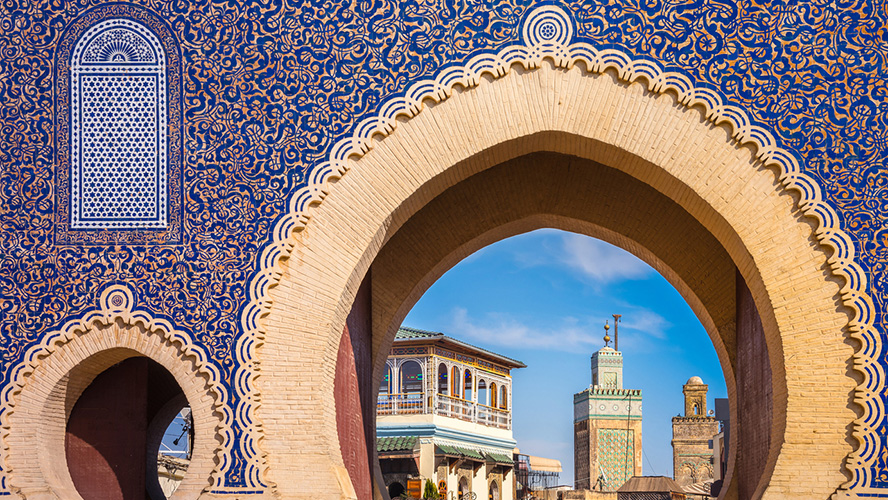
The Souks of Fez
If there’s one thing that can be said about the Medina of Fez, it’s that its labyrinthine streets are like a huge market. There are, of course, plenty of them, and each souk or traditional market usually specialises in a particular type or range of products. For centuries, the Henna Souk has offered cosmetics and pharmaceuticals, especially traditional ones. The Attarine Souk, one of the most popular ones, is a huge showcase of spices, but also sells brocades and silks. The Nejjarine Souk is the carpenters’ souk and the Sekkatine Souk sells tack for horses, mules, and donkeys. The Chemainne Souk sells dried fruits and nuts, the Achebine Souk sells birds and chickens, and the Bellagine Souk sells typical wooden shoes.
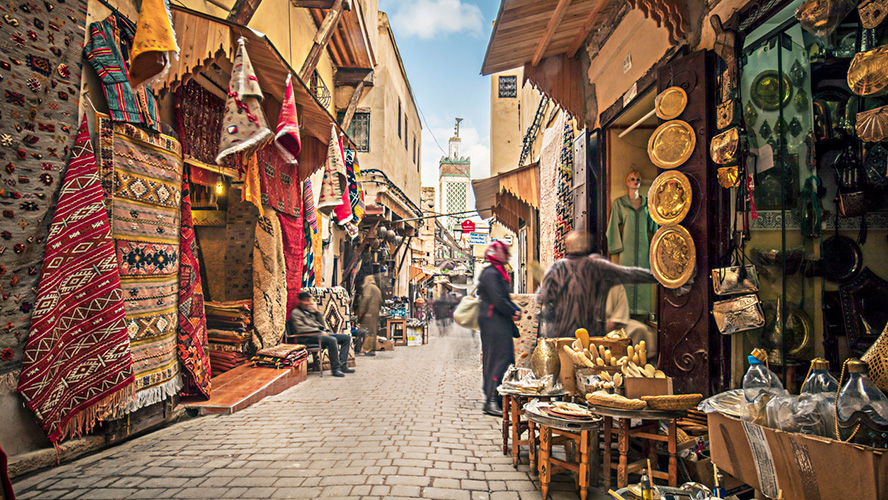
The Tanners’ Souk
Within the unique commercial and artisan landscape of Fez, this place is particularly striking for a number of reasons, but perhaps the most peculiar thing of all is its aroma. There are at least four tanners inside the Medina of Fez who still use traditional methods such as pigeon droppings and cow urine. The famous Chouara tannery is the largest of them all and is still a spectacle, even though it has been thoroughly renovated. However, it’s best viewed from the upper terraces of the shops, both for the best views and to get some relief from the strong smell that permeates this place.
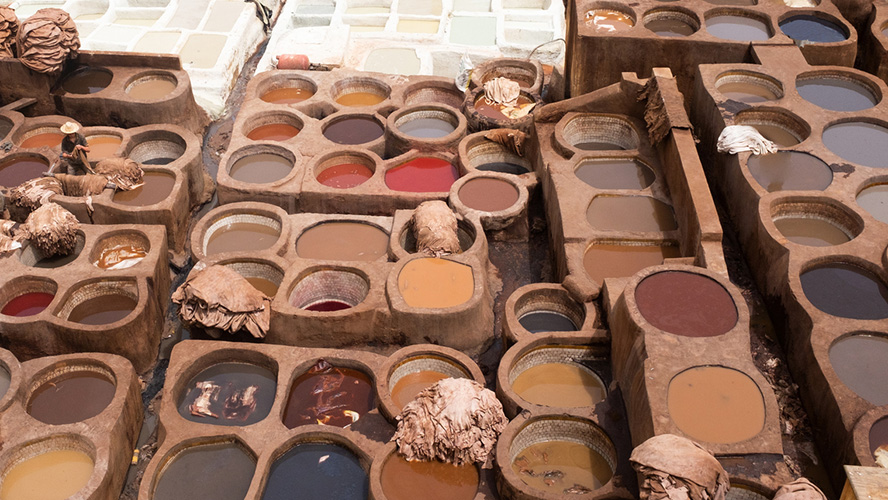
Seffarine Square
In this corner of the Medina of Fez, you can see one of the oldest trades in the city in action, the craftsmen who make copper pots, teapots, bowls, jugs, and other copper items. Even today, the coppersmiths in the square tirelessly hammer metal to shape all kinds of objects, as they have done for generations. It’s certainly an interesting spot.
Nejjarine Square
This tiny little square, located next to the carpenters’ souk, would go unnoticed were it not for two key features: a fountain and an ancient funduq. The first feature is a marvel of Islamic art and the oldest surviving water supply in the city. The second, a funduq or former inn for merchants, is a magnificent three-storey building around a courtyard, carefully restored and converted into the fascinating Museum of Wooden Arts and Crafts.
The Mosque and University of al-Qaraouiyyîn
Founded in 859 by a woman of Tunisian origin, Fatima al-Fihri, this building is one of the most important landmarks not only in Fez but in the whole of Morocco. Considered to be one of the oldest educational institutions in the world, its huge minaret is one of the unmissable sights the medina has to offer. Unfortunately, access is restricted for non-Muslims. In addition, next to the mosque, the Al Attarine Madrasa, which is open to the public, also offers an outstanding example of medieval Islamic architecture and the city’s rich cultural heritage.
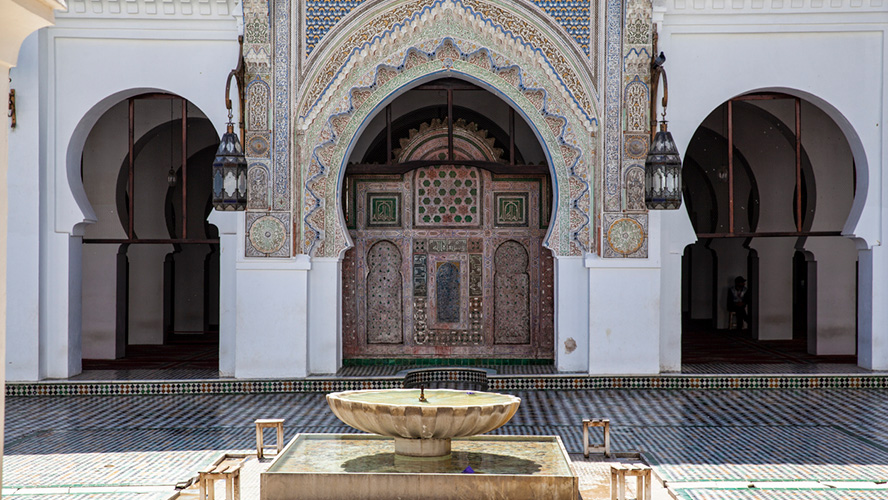
The Mausoleum of Mulay Idris II
Continuing with the great landmarks of the Medina of Fez, on one side of al-Qaraouiyyîn is this sanctuary or zaouia dedicated to the man who was king of Morocco between 791 and 828, and who was responsible for making Fez (founded by his father, Idris I, in 789) the capital of the kingdom from 807 onwards. The mausoleum, rebuilt in the Alawite style in the 18th century, is a major pilgrimage site and the holiest place in the medina. Non-Muslims are, of course, not allowed to enter, but they can still look inside from the door and admire the splendour of this unique building.
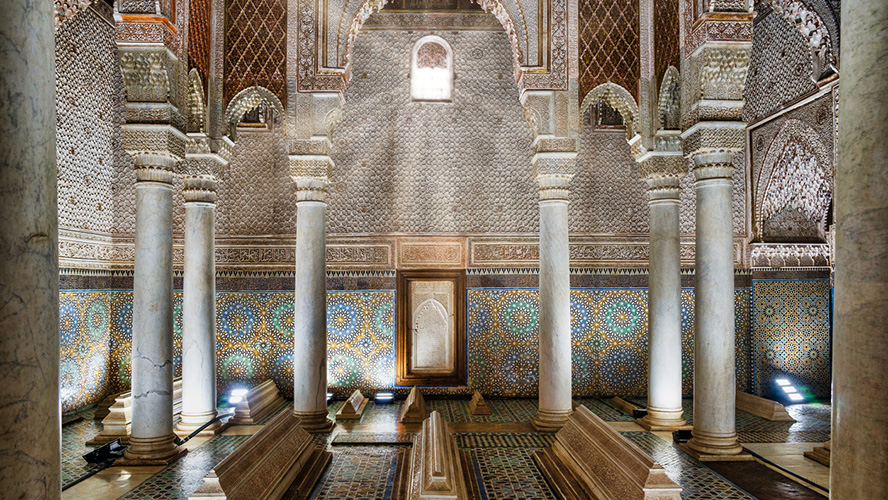
The Andalusian Mosque
Located in the Andalusian quarter, this is another of the main religious buildings in the Medina of Fez. As its name suggests, the quarter and mosque were built by immigrants from al-Andalus in around 860. This makes it one of the oldest buildings in the medina itself (although it has been renovated and expanded several times). It’s a historical masterpiece which, as is the case with al-Qaraouiyyîn, only Muslims may enter.
In any case, wandering through the narrow streets of the Medina of Fez isn’t only an invitation to discover its marvellous architectural treasures, it’s also a good way to observe a way of life, a cultural mosaic, which persists despite the profound changes that modern societies are undergoing.




































































